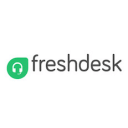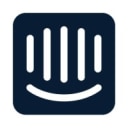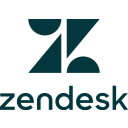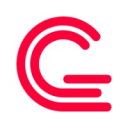Help Scout vs Front: Choosing your customer support platform
- 01Help Scout vs Front: overview
- 02What's the difference between Help Scout and Front?
- 03Help Scout pros and cons
- 04Front pros and cons
- 05Help Scout compared to Front
- 06Front compared to Help Scout
- 07Features comparison
- 08Help Scout vs Front: Which is the best for your business?
- 09Promotions on Customer Support software
- 10Alternatives to Help Scout & Front
Access up to $300 savings on Help Scout & $4,740 on Front
Front
6 months free on Growth plan
Access up to $300 savings on Help Scout & $4,740 on Front
Front
6 months free on Growth plan
Customer communication platforms are essential for managing interactions and maintaining strong relationships with your clients. These tools provide crucial functionalities that help streamline communication processes, manage large volumes of inquiries, and improve overall customer satisfaction. Yet, the market is saturated with options, which can make choosing the right one quite daunting.
However, we’re here to help simplify your decision. In this article, we compare two leading solutions in this space—Help Scout and Front—and delve into their shared features and primary distinctions. Continue reading to uncover more about Help Scout and Front, and find out which one is best suited to meet your business's specific needs.
Help Scout vs Front: overview
Help Scout and Front are prominent competitors in the world of customer support and communication platforms, each offering a unique set of features and functionalities.
Help Scout is acclaimed for its intuitive user interface and robust customer service capabilities, making it ideal for businesses looking to enhance their customer support operations. It allows teams to manage conversations seamlessly with features like shared inboxes, automated workflows, and an integrated knowledge base. On the other hand, Front stands out with its ability to centralize communication by integrating email, apps, and social media into a single platform, enabling more collaborative and transparent customer interactions.
Let's dive deeper into the Help Scout vs. Front comparison to guide you in choosing the most appropriate customer support platform tailored to your specific business requirements.
What's the difference between Help Scout and Front?


Help Scout and Front are both customer support platforms that facilitate communication with customers, but they serve somewhat different needs and feature sets which might make one more suitable than the other depending on your specific business requirements.
Firstly, the platforms cater to different kinds of communication workflows. Help Scout is primarily designed for businesses looking for a straightforward, focused help desk solution. It offers features like shared mailboxes, live chat, and a knowledge base that are integrated into a simple user interface. This setup is ideal for teams that need a reliable and efficient system to manage customer queries without the complexity of extra features.
In contrast, Front is designed for teams that manage multifaceted communication streams. It supports not just email but also integrates social media, SMS, and live chat into a single platform. This makes it particularly useful for businesses that require a unified interface to handle all forms of customer communications. Front’s approach is to ensure that all communication channels are centrally managed, which can enhance collaboration among team members and ensure a consistent customer service experience across platforms.
Another significant difference lies in the customization and integration capabilities of each platform. Help Scout provides a more limited range of integrations but focuses on delivering a seamless, easy-to-use experience out of the box. It is well-suited for businesses that want a hassle-free setup with minimal customization needs. Conversely, Front offers more extensive integration options with other tools and services, which can be crucial for businesses that rely heavily on automation and syncing data across multiple platforms.
Pricing structures also vary between the two. Help Scout offers pricing based on the number of users, which includes access to all its features, making it a cost-effective option for smaller teams. Front, however, tends to be more expensive but justifies this with its advanced features and greater scalability for larger teams or businesses.
Help Scout pros and cons
What are the advantages of Help Scout?
- User-friendly interface: Help Scout provides a clean and intuitive interface that makes it easy for customer support teams to navigate and use efficiently.
- Collaborative features: It offers robust collaboration tools such as notes, mentions, and assignments, which help teams work together effectively to resolve customer issues.
- Automation and workflows: Help Scout allows for automation of repetitive tasks and the creation of custom workflows, which can streamline customer support processes and improve efficiency.
- Customer satisfaction: It includes features like customer satisfaction surveys (CSAT) and reporting tools that help businesses track and improve customer satisfaction levels.
- Integration capabilities: Help Scout integrates with various third-party apps and services, including CRMs, e-commerce platforms, and productivity tools, enhancing its functionality and adaptability to different business needs.
What are the disadvantages of Help Scout?
- Cost: The pricing of Help Scout can be considered a drawback for some small businesses or startups, as it might be relatively higher compared to other customer support solutions.
- Limited customization: While Help Scout offers customization options, they may not be as extensive or flexible as some other customer support platforms, which could be a limitation for businesses with specific needs.
- Reporting limitations: Some users find that the reporting capabilities in Help Scout could be more robust, particularly in terms of advanced analytics and data visualization.
- Learning curve: Although Help Scout is generally user-friendly, some users may experience a learning curve when first using the platform, especially when configuring workflows or integrations.
- Dependency on internet connectivity: As a cloud-based software, Help Scout requires a stable internet connection for optimal performance, which could be a limitation in regions or situations with unreliable internet access.
Compare Help Scout to other tools
Front pros and cons
What are the advantages of Front?
- Collaborative features: Front excels in facilitating teamwork with features like shared inboxes, internal comments, and mentions, which enhance communication and collaboration among team members.
- Integration capabilities: It offers extensive integration options with various third-party apps and services, including CRMs, project management tools, and chat platforms, allowing for a seamless workflow across different tools.
- Automation: Front includes powerful automation features such as rules and workflows that help automate repetitive tasks and streamline email management, improving efficiency and reducing manual work.
- Analytics and reporting: It provides detailed analytics and reporting tools that offer insights into team performance, response times, and customer interactions, helping businesses track metrics and make data-driven decisions.
- Customer experience: Front focuses on enhancing the customer experience with features like shared drafts, templates, and reminders, enabling teams to provide timely and personalized responses to customer inquiries.
What are the disadvantages of Front?
- Collaborative features: Front excels in facilitating teamwork with features like shared inboxes, internal comments, and mentions, which enhance communication and collaboration among team members.
- Integration capabilities: It offers extensive integration options with various third-party apps and services, including CRMs, project management tools, and chat platforms, allowing for a seamless workflow across different tools.
- Automation: Front includes powerful automation features such as rules and workflows that help automate repetitive tasks and streamline email management, improving efficiency and reducing manual work.
- Analytics and reporting: It provides detailed analytics and reporting tools that offer insights into team performance, response times, and customer interactions, helping businesses track metrics and make data-driven decisions.
- Customer experience: Front focuses on enhancing the customer experience with features like shared drafts, templates, and reminders, enabling teams to provide timely and personalized responses to customer inquiries.
Compare Front to other tools
Help Scout compared to Front
Help Scout and Front are both powerful tools for managing customer communications, each with distinct strengths. Help Scout excels with its intuitive interface and strong focus on customer satisfaction metrics, making it ideal for teams prioritizing user-friendly support solutions.
In contrast, Front stands out for its robust collaboration features and extensive integration capabilities, catering well to teams that require seamless teamwork across multiple channels and apps. Both platforms offer automation to streamline workflows, but Help Scout may be more cost-effective for smaller businesses, while Front's complexity and higher pricing are justified by its deeper collaborative and integration functionalities.
Is Help Scout better than Front?
When evaluating whether Help Scout or Front is better, it largely depends on the specific needs of a business. Help Scout offers a streamlined experience that focuses on direct customer engagement and support, which is particularly beneficial for small to mid-sized companies looking to enhance their customer service without the need for extensive integrations.
On the other hand, Front is better suited for larger organizations or those where team collaboration within the customer support process is crucial, thanks to its superior ability to integrate with numerous platforms and manage communications across different channels.
What is Help Scout best used for?
Help Scout is best used for enhancing customer support operations through its intuitive interface and customer-centric features. It excels in managing email communications and support tickets efficiently, allowing teams to prioritize and respond to customer inquiries promptly. Help Scout's focus on collaboration and automation aids in streamlining workflows, ensuring consistent and personalized customer interactions.
It is particularly beneficial for businesses looking to track and improve customer satisfaction metrics with built-in survey tools and analytics. Overall, Help Scout provides a robust platform for delivering exceptional customer support experiences while fostering team productivity and operational efficiency.
Can Help Scout replace Front?
Help Scout and Front serve distinct purposes in customer communication management. While Help Scout excels in email management and customer support with its intuitive interface and focus on satisfaction metrics, Front stands out for its collaborative inbox and extensive integration capabilities.
While Help Scout can handle basic team communication needs, Front's specialized features like shared inboxes and deeper integration options make it indispensable for teams requiring extensive collaboration across various channels and tools. Therefore, while Help Scout is excellent for customer support, Front's unique strengths in collaborative communication make it unlikely to be fully replaced by Help Scout in many organizational contexts.
Is Help Scout cheaper than Front?
Help Scout and Front differ significantly in pricing based on their features and target users. Help Scout generally offers a more straightforward pricing structure that may be more affordable for small to medium-sized businesses, especially those primarily focused on customer support needs.
In contrast, Front's pricing tends to be higher due to its extensive collaboration features and integration capabilities, which cater to larger teams needing robust communication tools. While both platforms provide value for their respective costs, businesses should consider their specific requirements for customer support versus collaborative communication when evaluating the affordability and suitability of Help Scout versus Front.
Is there a better Customer Support software than Help Scout?
When evaluating if there's a better software than Help Scout for your customer support needs, it's essential to consider alternatives that may better align with your specific requirements.
Notable alternatives to Help Scout in the customer support software space include Zendesk, Freshdesk, Intercom, and Zoho Desk. Each platform offers unique features such as advanced ticketing systems, extensive integrations with CRM and e-commerce platforms, and robust reporting capabilities. The choice between Help Scout and its alternatives depends on factors like ease of use, scalability, pricing structure, and the level of customization needed to support your organization's customer service strategy effectively.
6 months free on the Plus plan on Help Scout
Get 6 months free on the Plus plan on Help Scout and up to $300 savings with Secret.
Front compared to Help Scout
Front and Help Scout are both prominent choices for managing customer communications, yet they differ significantly in focus and functionality. Front excels with its collaborative inbox, facilitating seamless teamwork through shared inboxes, internal comments, and extensive integration capabilities. It's ideal for teams needing robust collaboration across various channels and apps.
In contrast, Help Scout prioritizes user-friendly customer support with an intuitive interface, strong emphasis on customer satisfaction metrics, and efficient email management. Businesses looking for advanced collaboration features may prefer Front, while those prioritizing straightforward customer support operations might find Help Scout more suitable for their needs.
Is Front better than Help Scout?
Determining whether Front is superior to Help Scout hinges on an organization's unique requirements for customer communication management. Front's strength lies in its advanced collaborative features, making it particularly advantageous for larger teams or businesses that operate across multiple channels and require extensive integration with other apps. Its capability to enable shared inboxes and internal communication can streamline complex processes and enhance team efficiency.
Consequently, for environments where collaboration is key to managing customer interactions effectively, Front often proves to be the better choice. Conversely, for businesses that value simplicity and direct customer service interactions, Help Scout might be the preferred option.
What is Front best used for?
Front is best used for enhancing team collaboration and managing communication across multiple channels effectively. It excels in facilitating seamless teamwork through features like shared inboxes, internal comments, and mentions, making it ideal for businesses that prioritize collaborative communication.
Front's extensive integration capabilities further enhance its utility by allowing teams to integrate with various tools such as CRMs, project management platforms, and chat services. It's particularly beneficial for teams needing to streamline workflows, improve response times, and maintain organized communication channels across different departments or remote teams, thereby optimizing overall productivity and customer service efficiency.
Can Front replace Help Scout?
Front and Help Scout serve distinct purposes in customer communication management. While Front excels in collaborative inbox management and integrating various communication channels, Help Scout focuses primarily on efficient email management and customer support operations.
Front's strength lies in facilitating team collaboration across different apps and channels, making it indispensable for teams requiring extensive teamwork and integration capabilities. However, Help Scout's simplicity and focus on customer satisfaction metrics make it highly effective for straightforward customer support needs.
Is Front cheaper than Help Scout?
Comparing the cost-effectiveness of Front versus Help Scout involves examining how each platform's pricing aligns with the operational needs of a business. Front, designed to cater to larger teams and complex operations with its vast array of integrations and collaborative tools, generally comes at a higher price point. This makes it a less cost-effective option for smaller businesses or those with simpler customer communication needs.
In contrast, Help Scout’s pricing, which tends to be more accessible with an emphasis on straightforward customer support functionalities, often emerges as the more budget-friendly choice, particularly for small to medium-sized enterprises looking for efficient and direct customer interaction without the need for elaborate features.
Is there a better Customer Experience software than Front?
When evaluating if there's a better software than Front for your team's communication needs, it's essential to consider alternatives that may better align with your specific requirements.
Alternative platforms to Front like Microsoft Teams, Zoom, Slack, and Google Workspace offer robust communication tools tailored to different aspects of team collaboration and productivity. The decision between Front and its alternatives hinges on factors such as ease of use, integration capabilities, pricing structure, and the scalability needed to support your organization's communication workflows and goals.
6 months free on Growth plan on Front
Get 6 months free on Growth plan on Front and up to $4,740 savings with Secret.
Features comparison
Front's Unified Communication Hub Outshines Help Scout for Multichannel Management

Front excels in consolidating messages across various communication channels into a single, unified inbox, enhancing team efficiency in managing diverse message volumes. Unlike Help Scout, which primarily focuses on email integration within its shared inbox feature, Front seamlessly integrates messages from social media platforms, chat services, and more. For instance, Front's integration capabilities span across channels like Twitter, Facebook, and WhatsApp, providing a holistic view of customer interactions.
This comprehensive approach not only streamlines communication but also ensures teams can effectively prioritize and respond to messages across multiple platforms, making Front the preferred choice for managing multichannel communications compared to Help Scout.
Help Scout's Intuitive Interface Enhances User Experience Over Front
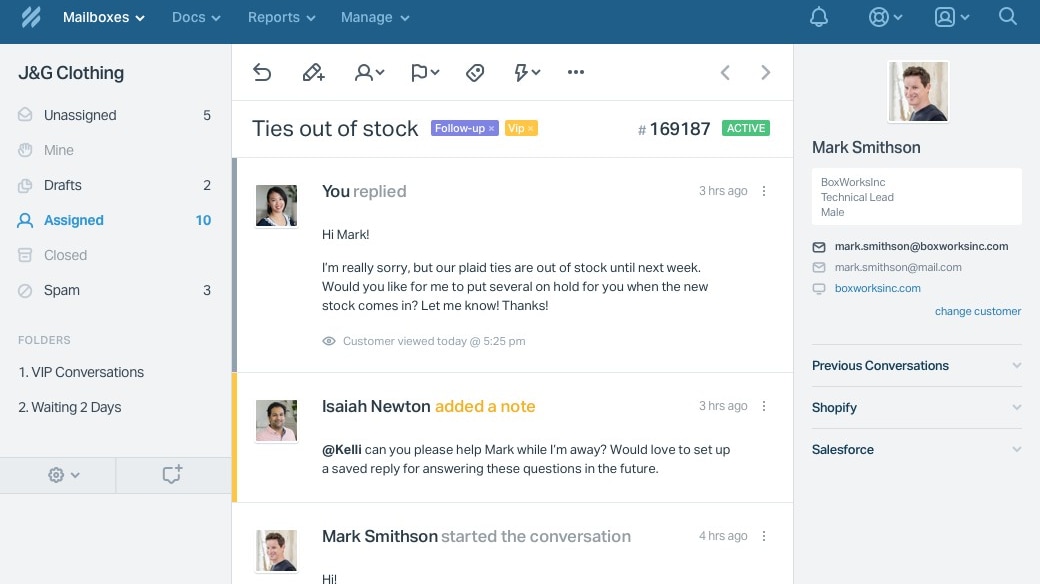
When it comes to the user-friendly experience, Help Scout surpasses Front with its straightforward interface design. Help Scout's minimalistic approach ensures essential features are easily accessible, enhancing usability for new users. For instance, its clear navigation and intuitive layout require minimal training, enabling teams to manage customer conversations efficiently.
In contrast, while Front offers extensive collaboration tools, its interface complexity may pose a steeper learning curve for beginners, potentially impacting initial productivity. Thus, Help Scout's focus on simplicity and functionality provides a smoother user experience, making it a preferred choice for teams seeking intuitive customer support solutions without sacrificing efficiency.
Help Scout's Robust Automation Outpaces Front in Efficiency

Help Scout excels in efficiency with its robust automation capabilities tailored for personalized workflows. It offers intricate automation features with advanced conditions, filtering options, and routing capabilities, allowing businesses to streamline and optimize their customer support processes effectively.
For example, Help Scout's automation can intelligently route tickets based on customer attributes or issue severity, enhancing response times and operational efficiency. In contrast, while Front also provides customizable workflows, its automation features may not offer the same level of granularity and personalization as Help Scout. Therefore, for organizations seeking comprehensive automation to enhance productivity, Help Scout proves to be the superior choice over Front.
Front Leads in Integration Flexibility Over Help Scout
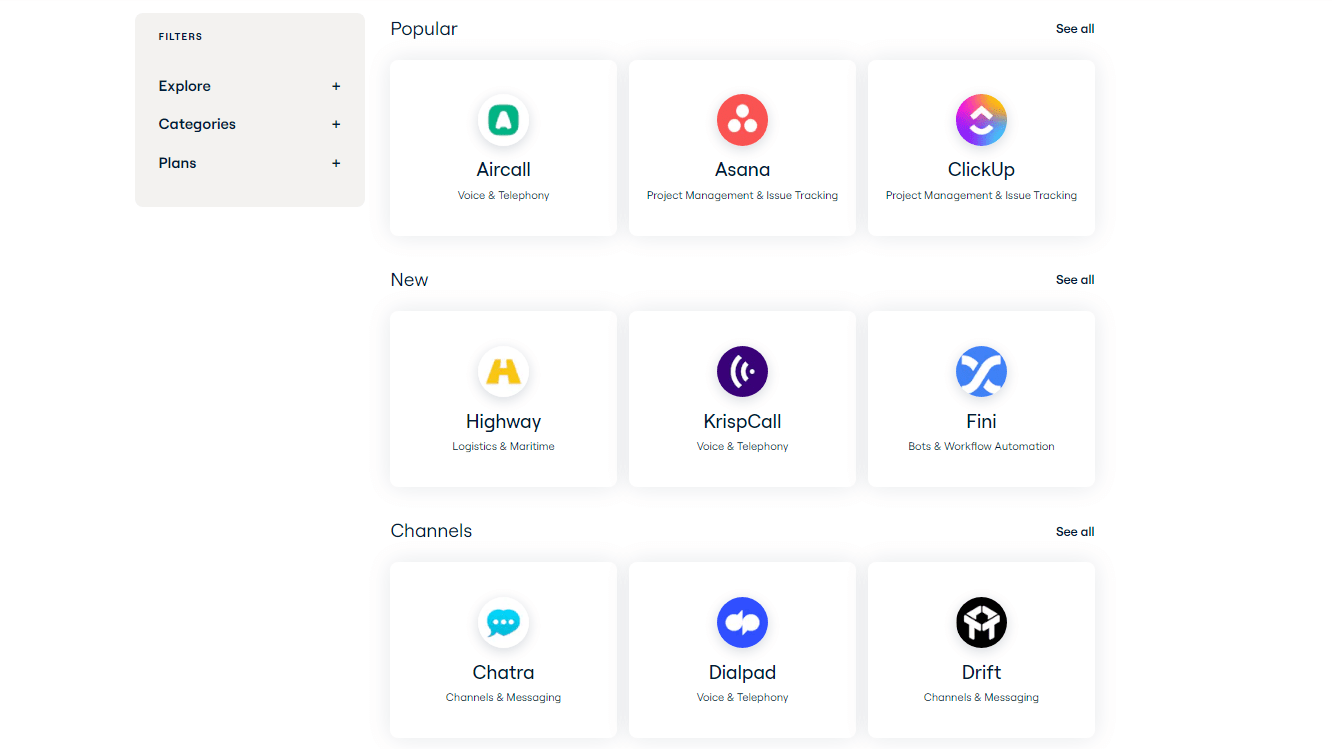
While Help Scout excels in user-friendliness, Front distinguishes itself with extensive integration capabilities. Front seamlessly integrates with a wide array of third-party email marketing platforms, communication software, and CRM applications such as Gmail, Slack, Salesforce, and Intercom, offering unparalleled flexibility for businesses reliant on diverse software ecosystems. Its robust API further facilitates custom integrations, catering to specific organizational requirements seamlessly.
In contrast, Help Scout, though proficient in integrating with platforms like Mailchimp and Shopify, may not match the breadth and depth of integration options provided by Front. Thus, for businesses prioritizing seamless workflow integration across multiple tools, Front emerges as the superior choice over Help Scout.
Front Offers Superior Analytics for Enhanced Insights Over Help Scout

Front distinguishes itself with comprehensive analytics and reporting capabilities that delve deep into performance metrics, customer engagement trends, and service quality benchmarks. For instance, Front's analytics tools provide detailed insights into response times, team workload distribution, and customer satisfaction scores, enabling teams to make data-driven decisions and optimize their communication strategies effectively.
In contrast, while Help Scout also offers valuable reports on channel volume, peak activity periods, and trending topics, Front's emphasis on detailed performance analytics gives it a competitive edge in providing actionable insights for improving operational efficiency and enhancing customer interactions.
Help Scout Leads with Self-Service Excellence Through Docs

Help Scout's Docs feature excels in empowering customers with a comprehensive self-service portal to find solutions to common queries independently. For example, businesses can create detailed knowledge base articles, FAQs, and troubleshooting guides accessible to customers 24/7.
In contrast, while Front boasts advanced search and archiving capabilities to manage communication effectively, it lacks a dedicated self-service knowledge base like Help Scout's Docs. This distinction makes Help Scout the preferred choice for organizations aiming to reduce support ticket volumes and enhance customer satisfaction through accessible and user-friendly self-service options, setting it apart from Front in customer support capabilities.
Help Scout and Front are Equally Proficient at Automation

Both Help Scout and Front prioritize automation to enhance operational efficiency. Help Scout leverages workflow automation with detailed conditions, filtering, and routing options to streamline customer service tasks effectively. For example, it can automatically assign tickets based on priority or customer segment, optimizing response times.
Similarly, Front utilizes automated routing to intelligently distribute messages to appropriate team members, ensuring swift handling of inquiries across channels. While Help Scout excels in email-centric automation, Front's strength lies in its broad application across various communication channels, making both platforms equally capable in automation, depending on specific organizational needs and workflow requirements.
Subscribe to our newsletters.
No FOMO here. Stay up-to-date on all the latest deals and news with our monthly newsletter straight to your inbox like 126,000+ entrepreneurs (+ Get 10% off on on our Premium Membership!)
Help Scout vs Front: Which is the best for your business?
Help Scout is the best tool for you if:
- You value a user-friendly interface that requires minimal training, allowing your team to focus on delivering quality customer support immediately.
- You're seeking a cost-effective solution designed specifically for small to medium-sized businesses with straightforward support needs.
- Your priority is measuring and enhancing customer satisfaction through built-in analytics and reporting tools tailored for support services.
- You prefer a tool that can be easily set up and managed without the need for extensive IT support or custom integrations.
- Simplicity in workflow and an emphasis on direct customer interactions are central to your support strategy, without the complexity of additional features.
Front is the best tool for you if:
- Your organization requires high-level collaboration among team members with features like shared inboxes, internal comments, and assignment tools to enhance communication efficiency.
- You need a robust system that integrates seamlessly with a wide array of other applications, supporting a complex, multi-channel communication strategy.
- The ability to manage customer communications across various platforms including email, social media, and messaging apps is crucial for your customer engagement strategy.
- Your team is large or distributed, necessitating advanced tools that enable effective collaboration and coordination across different departments and locations.
- You prioritize customizable workflows and detailed reporting capabilities to continuously improve your team's performance and customer interaction quality.
Alternatives to Help Scout & Front
Promotions on Customer Support software
Start saving on the best SaaS with Secret.
Secret has already helped tens of thousands of startups save millions on the best SaaS like Help Scout, Front & many more. Join Secret now to buy software the smart way.





